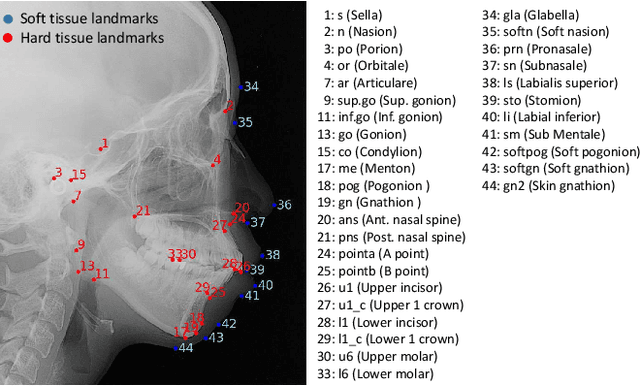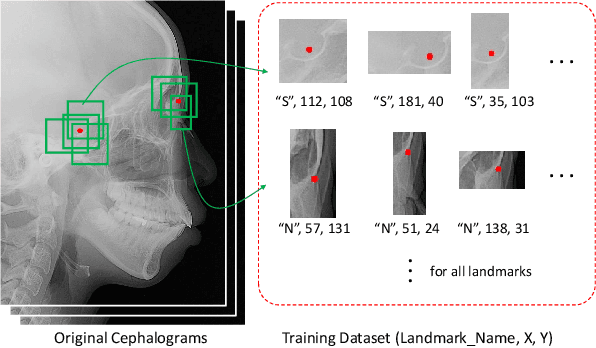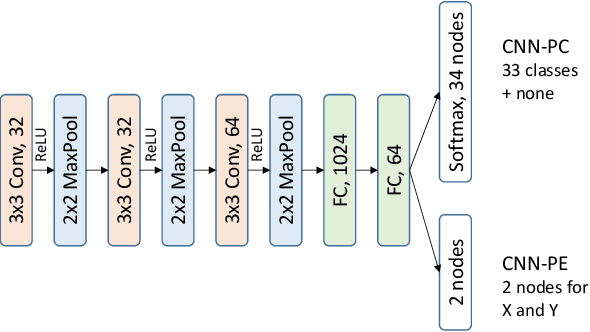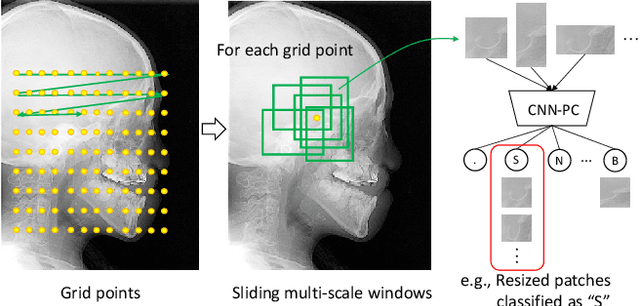Chihiro Tanikawa
Deep Learning based Cephalometric Landmark Identification using Landmark-dependent Multi-scale Patches
Jun 07, 2019



Abstract:A deep neural network based cephalometric landmark identification model is proposed. Two neural networks, named patch classification and point estimation, are trained by multi-scale image patches cropped from 935 Cephalograms (of Japanese young patients), whose size and orientation vary based on landmark-dependent criteria examined by orthodontists. The proposed model identifies both 22 hard and 11 soft tissue landmarks. In order to evaluate the proposed model, (i) landmark estimation accuracy by Euclidean distance error between true and estimated values, and (ii) success rate that the estimated landmark was located within the corresponding norm using confidence ellipse, are computed. The proposed model successfully identified hard tissue landmarks within the error range of 1.32 - 3.5 mm and with a mean success rate of 96.4%, and soft tissue landmarks with the error range of 1.16 - 4.37 mm and with a mean success rate of 75.2%. We verify that considering the landmark-dependent size and orientation of patches helps improve the estimation accuracy.
Using Natural Language Processing to Develop an Automated Orthodontic Diagnostic System
May 31, 2019


Abstract:We work on the task of automatically designing a treatment plan from the findings included in the medical certificate written by the dentist. To develop an artificial intelligence system that deals with free-form certificates written by dentists, we annotate the findings and utilized the natural language processing approach. As a result of the experiment using 990 certificates, 0.585 F1-score was achieved for the task of extracting orthodontic problems from findings, and 0.584 correlation coefficient with the human ranking was achieved for the treatment prioritization task.
 Add to Chrome
Add to Chrome Add to Firefox
Add to Firefox Add to Edge
Add to Edge